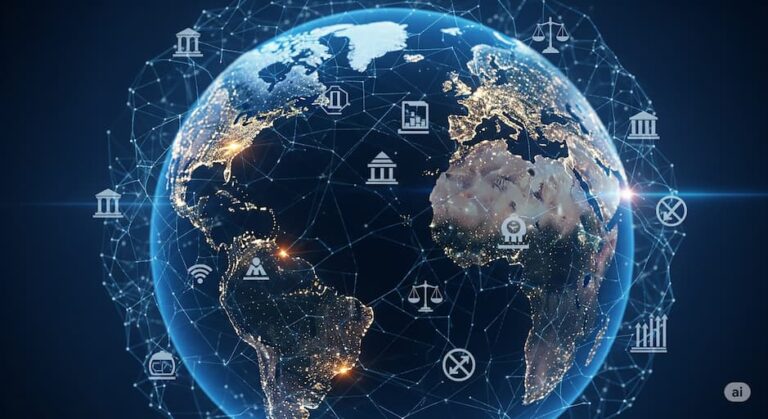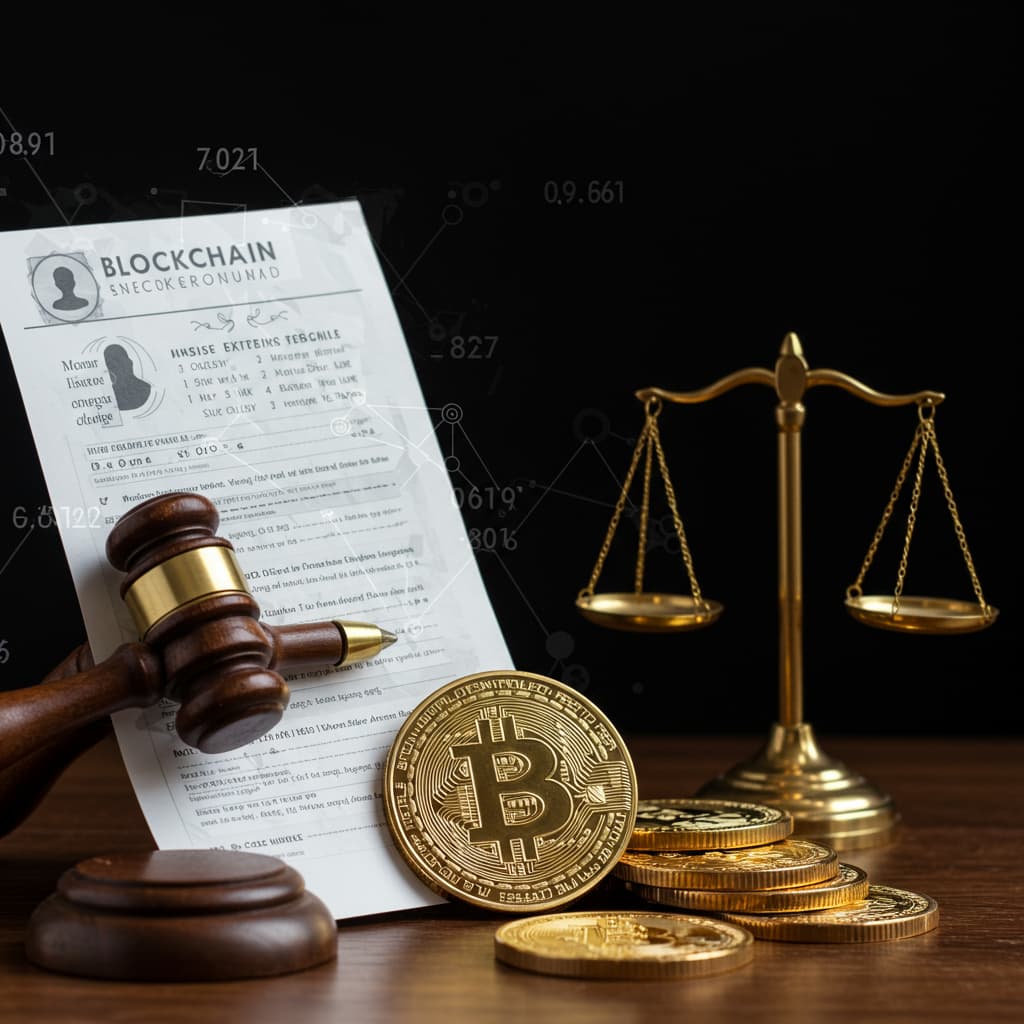How Is Blockchain Regulated Globally? What Challenges Do Governments and the Public Face Today?
Imagine a world where your bank isn’t the only trusted place to store your money. Instead, countless computers around the globe keep a shared record of every transaction, making it almost impossible for anyone to cheat or hack the system. This is the world of blockchain, the technology behind cryptocurrencies like Bitcoin, but with far-reaching potential beyond just digital money.
But with this new technology comes new questions: How do governments regulate something that’s decentralized, global, and often anonymous? And what problems do people face when using blockchain-based services?
What Is Blockchain? (A Quick Refresher)
Before diving into regulation, let’s quickly recap what blockchain is?
It’s a digital ledger, but unlike a traditional bank ledger stored on one computer, this ledger is shared and duplicated across many computers worldwide. This makes it transparent, tamper-resistant, and decentralized—no single authority controls it.
Because of these features, blockchain promises more secure transactions, faster settlements, and greater financial inclusion for people without access to banks. However, its decentralized nature also means traditional rules don’t fit neatly.
Why Regulate Blockchain at All?
You might wonder, if it is so secure and transparent, why regulate it?
Think of regulation as rules that help protect people, prevent crime, and maintain economic stability. Without rules, things can go wrong:
- Fraud and scams: Without oversight, people can lose money to fraudsters.
- Money laundering and illegal activity: Blockchain’s privacy can be abused.
- Market manipulation and investor protection: Price crashes and scams can hurt everyday investors.
- Tax evasion: Governments struggle to track taxable transactions.
- Financial stability risks: Large-scale crypto failures can affect the broader economy.
So governments want to balance innovation with protection. But doing that with blockchain isn’t easy.
How Is Blockchain Regulated Around the World?
Regulation varies widely because it is so new, complex, and international. Let’s look at some examples:
- The United States: Cautious but Growing Oversight
The U.S. has many regulators involved:
- SEC (Securities and Exchange Commission): Focuses on whether cryptocurrencies and tokens count as securities (like stocks), which need strict rules.
- CFTC (Commodity Futures Trading Commission): Regulates crypto derivatives.
- FinCEN (Financial Crimes Enforcement Network): Tracks anti-money laundering (AML) compliance.
- IRS (Internal Revenue Service): Treats cryptocurrencies as property for tax purposes.
The U.S. has cracked down on fraud and unregistered offerings, but the patchwork approach can confuse businesses.
- The European Union: Unified Approach and Digital Finance Strategy
The EU is working on the Markets in Crypto Assets (MiCA) regulation, expected to create a clear framework by 2025 covering crypto service providers, stablecoins, and investor protection.
The EU also pushes for AML laws to prevent illicit use and encourages innovation through its Digital Finance Package.
- China: Strict Restrictions and a Centralized Digital Currency
China banned cryptocurrency trading and mining in 2021, citing risks to financial stability and fraud. However, it developed its own Digital Yuan (a central bank digital currency, or CBDC) to retain control over digital payments.
- Other Countries: Mixed Policies
- Japan: Recognizes cryptocurrencies as legal property and requires registration for exchanges.
- Singapore: Welcomes crypto innovation but enforces strict AML/KYC rules.
- India: Has a complex relationship, recently imposing taxes on crypto gains but debating further regulation.
- El Salvador: Made Bitcoin legal tender, an unprecedented move with global attention.
What Challenges Do Governments Face in Regulating Blockchain?
- Decentralization vs. Control
Traditional regulation relies on controlling intermediaries (banks, exchanges), but blockchain can operate peer-to-peer without intermediaries. This makes enforcing rules difficult.
- Rapid Innovation Outpaces Lawmaking
Blockchain technology evolves fast, and laws take time to draft and implement. Regulators can lag behind, sometimes making outdated or unclear rules.
- Global Nature Creates Jurisdiction Issues
Blockchain crosses borders instantly, but laws are national. Criminals can exploit regulatory gaps between countries.
- Balancing Innovation with Risk
Heavy-handed rules might smother innovation and economic benefits, while light regulation risks abuse and fraud.
What Issues Does the Public Face with Blockchain Today?
- Security and Scams
- Many users fall victim to phishing, rug pulls (projects that disappear with investors’ money), and fake exchanges.
- According to Chainalysis (2023), crypto crime hit $3.8 billion, though it’s a small fraction compared to the size of the market.
- Lack of Consumer Protection
Unlike bank accounts insured by governments, crypto wallets can be hacked or lost with no recourse.
- Complexity and Understanding
Blockchain and crypto can be confusing, causing mistakes or reluctance to adopt.
- Volatility and Financial Risk
Prices of cryptocurrencies can swing wildly, affecting people’s savings or investments.
Real-World Impact: How Does This Affect You?
- If you invest in cryptocurrencies, regulations impact what protections you have and how you pay taxes.
- Businesses that want to accept crypto payments must navigate complex laws.
- Governments want to use blockchain for better services but must do so securely.
- Ordinary people may benefit from more inclusive finance if blockchain is regulated well.
Practical Takeaways and Tips
- Stay Informed: Follow updates from regulators like SEC, EU MiCA, or your country’s central bank.
- Use Trusted Platforms: Choose exchanges and wallets with good reputations and regulatory compliance.
- Understand Risks: Never invest more than you can afford to lose in volatile assets.
- Know Your Rights: Learn how your country treats crypto for taxes and legal protections.
- Watch for Regulation Changes: Laws may evolve rapidly, so be ready to adapt.
The Future of Blockchain Regulation
The race is on globally to develop smart, balanced rules that foster innovation while protecting users. The coming years may bring:
- More coordinated international frameworks.
- Clearer rules for DeFi (decentralized finance) and NFTs.
- Wider adoption of Central Bank Digital Currencies.
- Better tools for tracking illicit activity without harming privacy.
Reflective Closing: What Does This Mean for You?
Blockchain’s promise is huge, but its regulation is a tricky puzzle. As a user, business, or citizen, understanding this growing landscape helps you make smarter choices.
So, what role should governments play in regulating this powerful technology? Should they clamp down to protect people, or loosen controls to foster innovation? And how can the public stay safe without stifling the future?


